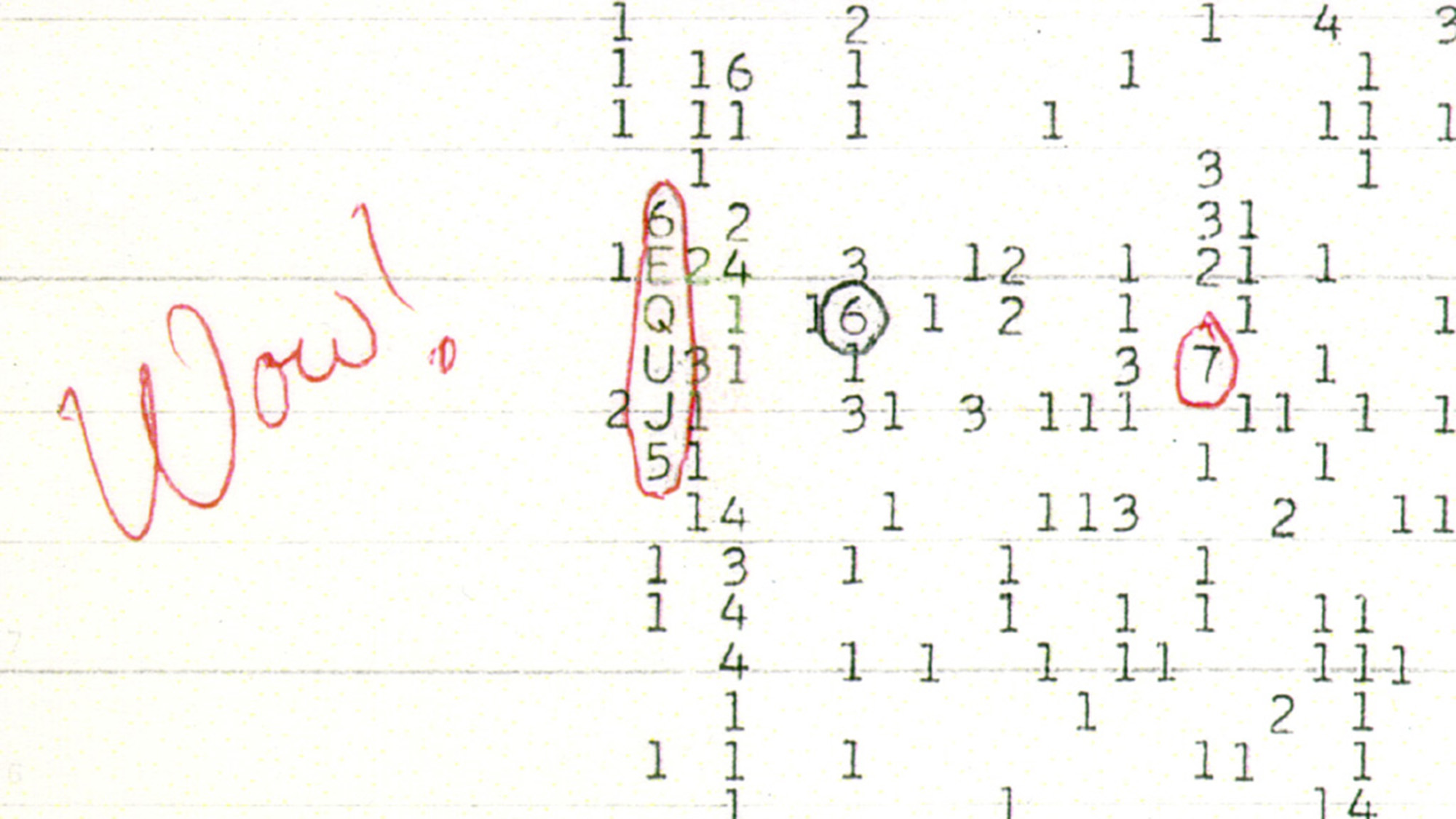Classic sci-fi makes it seem like our first contact with aliens will be absolutely unmistakeable: a massive, unearthly spaceship landing on Earth with creatures that come out to greet us, or a message that somehow we can readily and confidently translate. But in reality, the search for extraterrestrial intelligence (known as SETI) is a lot harder.
[ Related: How scientists decide if they’ve actually found signals of alien life ]
In 1977, Ohio State’s Big Ear telescope was listening for signals from intelligent life beyond Earth—and much to everyone’s surprise, they recorded a transmission that seemed like it could actually be the real deal. Astronomer Jerry R. Ehman was so surprised, in fact, that he wrote “Wow!” on the printed out data while reviewing it, giving this signal its name.
“The Wow! signal is fascinating to me because—as of now—nothing has ever come close to explaining it. It’s exactly the frequency you would choose if you were trying to send a radio wave a very long ways through space,” explains Seven Rasmussen, astronomer and author of the upcoming astrobiology book Life in Seven Numbers. “Personally, it’s my all-time favorite possible technosignature,” they add. However, the Wow! signal has yet to be detected again, leaving astronomers wondering what caused this weird observation.

A lot of things in space actually emit radio waves, and astronomers use all wavelengths of light (radio very much included!) to study the cosmos. For example, radio waves enabled the famous first-ever image of a black hole from a few years back. They also helped Jocelyn Bell Burnell discover a strange type of dead star known as a pulsar, and revealed disks of gas that serve as nurseries for planets around other stars.
All these natural sources have something in common: they emit a fairly broad range of radio frequencies. One kind of technosignature—a sign of technology, or equivalently, intelligent life beyond Earth—is a so-called narrowband radio signal. Whereas nature mostly produces broadband signals, technology can create very focused messages.
“To have a truly convincing technosignature, you need something which has unquestionably been created with intent. The intent could be a tool, or a habitat, or a message, or a work of art. But we would have to be certain that it could not occur naturally,” says Rasmussen. “Nature can create right angles (pyrite, bismuth, all manner of crystals), but not, say, a house.”
Scientists also consider a variety of technosignatures other than radio images, from the sci-fi concept of a Dyson sphere harnessing a whole star’s energy to more relatable technological effects like pollution in a planet’s atmosphere. But the idea of hearing a radio signal from aliens has really stuck in our minds, immortalized in the movie Contact where Jodie Foster listens to a radio telescope with old-school headphones. (It’s worth noting that, unfortunately, real radio telescopes don’t generally work like that–there’s no lightning port to plug in your earbuds.)
Some astronomers are still searching for radio technosignatures (including a repeat of the Wow! signal from the direction of the constellation Sagittarius) such as with the Breakthrough Listen project, using radio telescopes like the Allen Telescope Array in California or the Green Bank Telescope in West Virginia. Yet none of these surveys have yet to find anything more convincing than the Wow! signal, which was both narrowband and at an interesting, possibly specially-chosen wavelength: 21 centimeters, an important wavelength for one of the lines of atomic hydrogen, the most abundant component of the universe.
At the same time, other astronomers are working to explain the Wow! signal with natural astrophysics. In a recently posted preprint, an international group of astronomers trawled through data archives from Puerto Rico’s Arecibo Observatory, once the largest single dish telescope in the world before its catastrophic collapse in 2020. They found some signals similar to Wow!, but could easily attribute them to clouds of cold hydrogen floating around between stars. As a result, they suggest that the Wow! signal was perhaps an astronomical maser flare, a sudden brightening of one of those clouds due to some nearby cosmic explosion. Rasmussen describes this as “the most compelling hypothesis I’ve heard, but I’d like to find the magnetar/SGR responsible for the maser before I say it was definitely a natural phenomenon.”
As radio SETI searches expand, perhaps we’ll find more of these maser flares or other possible messages from beyond—or maybe, even a repeat of the famed Wow! signal itself.

